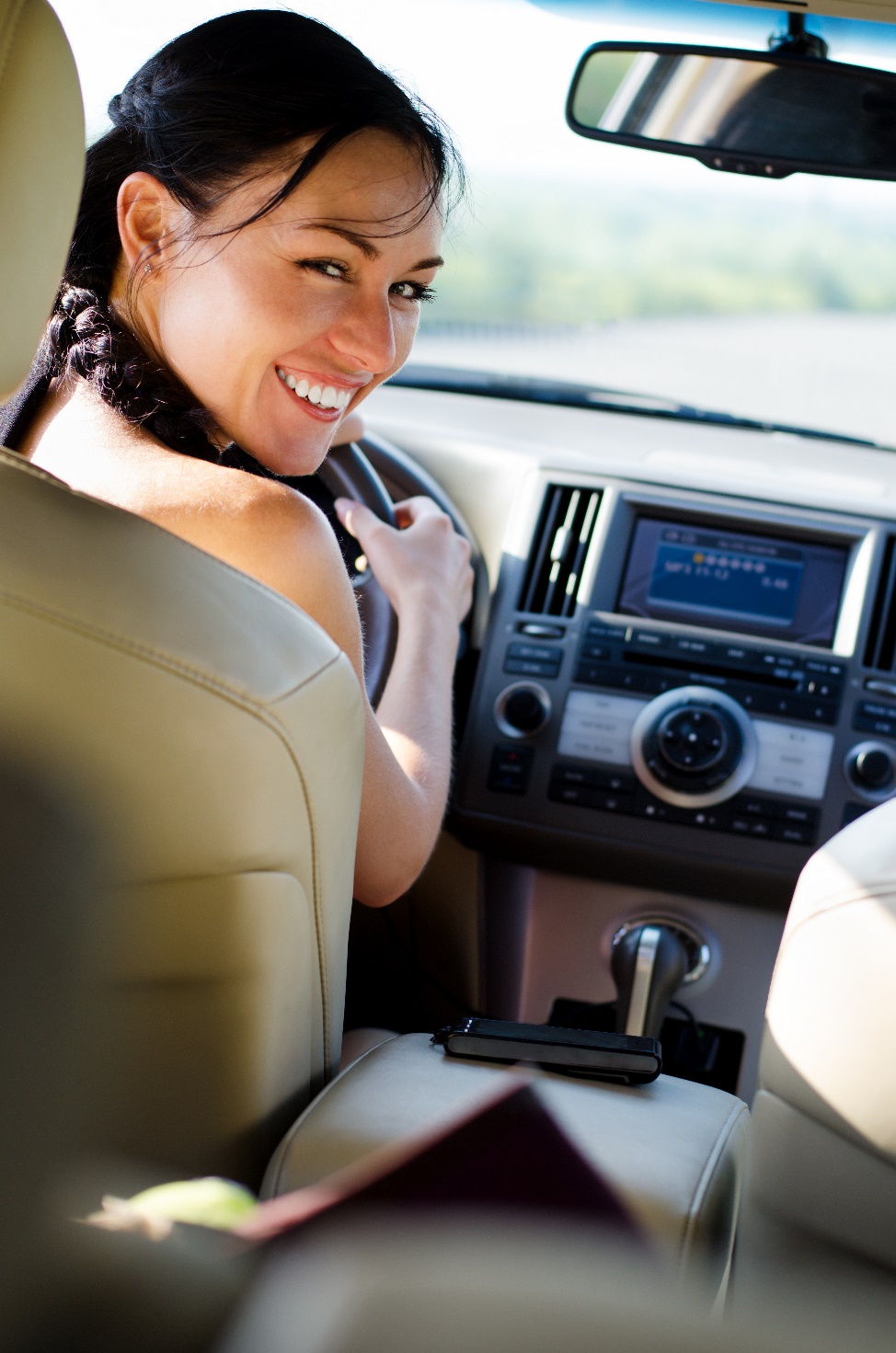Blind spots have been responsible for a large percentage of vehicle accidents, some of which were fatal. Unfortunately, all drivers are at risk of becoming involved in this type of accident, simply because no vehicle is without its blind spots. However, by understanding what a blind spot is and how to properly check them, your risk can be drastically reduced.
What Is a Blind Spot?
A car blind spot is the area of a vehicle that prohibits drivers from using their rear or side mirrors to see the vehicles around them. A vehicle has several blind spots, each which pose a great disadvantage to the driver.
Not only do blind spots completely hide objects and vehicles from the driver’s view, but they also force drivers to divert their vision from the road in order to confirm the presence of other vehicles, which can lead to accidents.
Modern Vehicles and Blind Spot Detection
Today’s technology in vehicles has served to dramatically increase the safety of drivers and their passengers. Blind spot detection systems will alert you whenever your vehicle gets too close to an object or another vehicle.
However, as useful as these detection systems may be, they should not be solely relied on. It is still highly recommended that drivers always look to confirm what their onboard detection system is telling them.
Blind Spots and Vehicle Size
Blind spots are present in all vehicles. However, in larger vehicles like trucks, the size of their blind spots will be larger as well. For vehicles like tractor-trailers, their blind spots can make entire groups of vehicles impossible to see.
High vehicles like tractors, on the other hand, have blind spots located below them. This makes it impossible for the driver to see any vehicle located in this area.
For cars, there are two well-known blind spots, which are located on either side of the vehicle, just behind the driver. However, there are also an additional three blind spots on cars that can be dangerous.
Pillars
A car’s pillars are blind spots as well. There are three pillars to be aware of:
The A-pillars are located on the sides of the windshield, and the problem with these is that they have become wider due to more modern designs. Although these designs are intended to protect those inside, improve gas mileage, and provide better protection against crashes, the significant reduction in visibility is a concern.
The B-pillars, located behind the front doors on a vehicle are another blind spot which can cause a driver not to see the vehicles, objects, or people around them. Of course, because the B-pillar is an integral part of a vehicle’s structure, the only option is to learn how to navigate around it.
The sides of the rear window on a car are supported by C-pillars, which also present blind spots for drivers. Just as with the B- and A-pillars, C-pillars can be dealt with when one understands how to navigate around them.
Situations That Can Cause Blind Spot Accidents
There are many ways in which your vehicle’s blind spots can block your view and cause an accident.
Even in cars with blind spot detection systems, reversing can definitely cause visibility issues. Many advise that you conduct a ‘circle check’ or get out and walk around your vehicle to confirm the presence or absence of obstacles before continuing to reverse.
Making a left-hand turn across a lane of oncoming traffic can mean your view is blocked by the A-pillar on your vehicle. Here, it is important to direct your view around this blind spot as frequently as possible before making your turn.
The same is true when you are changing lanes. Be aware of the traffic around you and beside you before you signal and move your vehicle. You will also want to double-check your blind spots prior to changing lanes.
When at an intersection or crosswalk, objects like bus shelters, trees, and even road signs can block your view of pedestrians and other cars. As you slow down and approach an intersection or crosswalk, you will need to be aware of the goings-on around you using proper mirror alignment.
Dealing with Blind Spots
Being aware of your vehicle’s blind spots can go a long way to helping you avoid an accident. However, it’s also important to learn the proper technique when trying to see around them, as well as how to maneuver correctly in traffic.
For example, merging onto highways and changing lanes, as well as signs and trees at intersections and reversing can all make other vehicles and pedestrians difficult to see, resulting in alarming blind spot accident statistics. This requires both the awareness of where blind spots are located, as well as proper adjustment of mirrors and the right technique for looking beyond them.
Mirror Adjustment
Many drivers adjust their side view mirrors in such a way as to direct them to show the rear of the vehicle. However, this is incorrect. Instead, drivers should consider adjusting their side mirrors away from the rear sides of the vehicle so that a wider view around the vehicle can be obtained.
Head Turn
Also known as a “shoulder check,” drivers who are merging onto a highway or changing lanes will want to conduct a visual check after signaling. The goal is to check blind spots without having to take their eyes off the road.
The head turn or shoulder check involves only a slight turn of the head before using peripheral vision to ensure that blind spots are clear. During the check, the driver’s shoulders should not leave the seat, nor should their head turn any more than 45 degrees.
Using the Rear and Side View Mirrors
Another way to enhance the view when changing lanes or merging onto highways is to incorporate the rearview mirror into the shoulder check process. This can be done by glancing in the rearview and side view mirrors right before the shoulder check. In learning to “track” the vehicles around you in this way, blind spots can be eliminated.
Convertible Cars and Blind Spots
Although the top being down on a convertible vehicle allows for a completely unobstructed view, this changes completely when the top is up. The design of convertible vehicles makes it necessary to ensure that you have the widest possible view out your rear window.
That being said, your side mirrors need to be adjusted correctly using the technique above, but with an even greater tilt than used with hardtop vehicles. The side mirrors will need to be adjusted far enough so that you are able to see the vehicles in the adjacent lane until they pass you on the side.
Blind Spot Accident Liability
Who is at fault when a blind spot accident occurs? It really depends on who is the negligent party. For instance, if you became involved in a blind spot accident as the result of being hit by another car, it is that driver’s negligence which is likely to place them at fault, according to car accident attorneys.
All drivers, including yourself, have the responsibility to not hit the other vehicles that share the road. Laws are in place to protect drivers from being run into, whether due to a blind spot or due to other circumstances.
What to Do Following a Blind Spot Accident
The first thing to do following a blind spot or another type of vehicle accident is to call the police and get a report. This will ensure that you have a tangible record of the accident. It’s also a good idea to make notes about what happened during the accident.
You can also check if there were any witnesses from whom you may be able to get a statement. If there are, you will want to get their contact information.
You’ll also want to seek medical attention, even if there was no need to call an ambulance at the scene. Seeking medical attention is vital, as you may be injured without knowing it, which can be life-threatening in the days following the accident.
Your final step will be to contact an auto accident attorney. Why? Because you will need assistance with getting financial reimbursement for the cost of your vehicle repair or purchase of a new vehicle, as well as for any lost wages as the result of injury, not to mention your medical bills.
The Right Lawyer for Your Blind Spot Accident Case
Finding the right attorney to handle your case is absolutely crucial. They must be experienced in dealing with blind spot and other types of car accidents, as well as knowledgeable in determining the right amount of compensation you will need.
Car accident cases can be complex, and it’s important that you have an experienced and thorough car accident lawyer to represent you and ensure that you receive a fair settlement. The award-winning attorneys at Schechter, McElwee, Shaffer & Harris have recovered millions of dollars for injury victims. Discover how we can get you the compensation you deserve; claim your free consultation today by calling (713) 364-0723.

 Over 300 Google 5 Star Reviews
Over 300 Google 5 Star Reviews









Leave a Reply